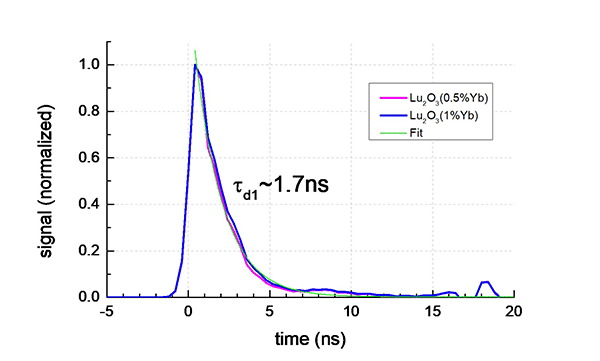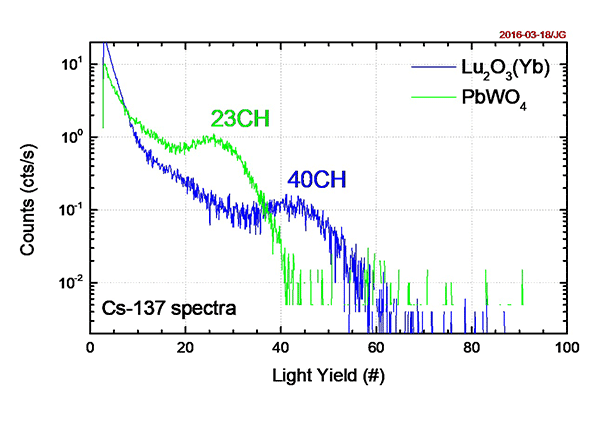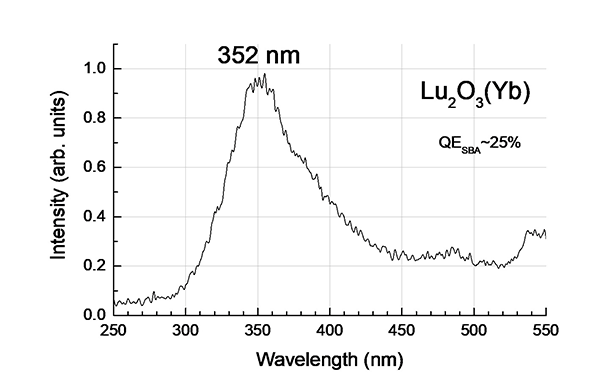Lu2O3:Yb3
Lu2O3:Yb3
Lu2O3:Yb3
Recent investigations of ceramic lutetium oxide doped with Yb3 (Lu2O3:Yb3+) have shown it to be a promising candidate for applications in Positron Emission Tomography (PET) imaging, high energy physics (HEP) and high energy radiography. It has a very high density of 9.4 g/cc, which makes it one of the densest scintillator materials known. When doped with Yb3+ this material exhibits so-called charge transfer (CT) emission, characterized by the very fast decay time of ~1.7 ns and light yield of ~2,000 ph/MeV. This gives Yb3+-doped Lu2O3 (LO:Yb) an initial photon intensity (within the first nanosecond) of more than 1,130 ph/MeV, significantly higher than in any other material currently used for HEP experiments. Both the speed and light yield are significantly better than that of lead tungstate i.e. PbWO4 (PWO), which makes it an attractive replacement for PWO. Also, due to its cubic structure, Lu2O3:Yb3+ can be produced using lower-temperature ceramic manufacturing techniques which are significantly less expensive than crystal growth.
RMD is also working on Lu2O3:La3+ ceramic scintillator for medical applications and high energy radiography. Lu2O3:La3+ is characterized by the same high density, 15,000 ph/MeV light yield, <10% energy resolution at 662 keV, and 1 microsecond decay time with very fast risetime for good timing resolution (<500ps).
Lu2O3:Yb3 Properties
Decay Time (<2ns)

Light Yield (70% higher than PbWO4)

Emission (QE ~25%)


